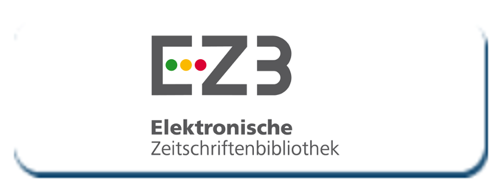Resection of the extravertebral portion of the filum terminale with posterior internal sphincterotomy, a surgical technique for managing chronic constipation and encopresis in children
DOI:
https://doi.org/10.5281/zenodo.10565461Keywords:
Chronic constipation, Encopresis, Tight filum terminale syndromeAbstract
Objective: Constipation is a frequent digestive complaint in children and can be refractory to treatment in approximately 30% of patients. Etiologies that are linked to this pathology include rectal hyporeflexia, achalasia of the internal anal sphincter, and neurological disorders such as tight filum terminale syndrome. For these conditions, the resection of the extra vertebral portion of the filum terminale and posterior internal sphincterotomy has shown potential benefits for management.
Materials and methods: We conducted a cross-sectional descriptive study between 2020 and 2021. We collected data from 219 children's medical records at Saint Petersburg State Pediatric Hospital, Russia, that fulfilled the diagnostic criteria and were managed surgically. We analyze their demographic characteristics and clinical outcomes.
Results: We found that 83.6% (n=183) of participants showed improvement, while 16.4% (n=36) experienced no improvement or complications. Patients in the 16-17 age group had the highest proportion of lack of improvement or complications, with 12.8% and the 1-5 age group exhibited a 100% improvement rate. Male patients exhibited a decreased probability of experiencing complications in the postoperative period.
Conclusions: Resection of the extravertebral portion of the filum terminale with posterior internal sphincterotomy has shown potential benefits in managing chronic constipation and encopresis in pediatric patients. However, further research is warranted to investigate the benefits and risks of this surgical technique.
References
van den Berg MM, Benninga MA, Di Lorenzo C. Epidemiology of childhood constipation: a systematic review. Am J Gastroenterol. 2006;101(10):2401-9.
Steutel NF, Zeevenhooven J, Scarpato E, Vandenplas Y, Tabbers MM, Staiano A, et al. Prevalence of Functional Gastrointestinal Disorders in European Infants and Toddlers. J Pediatr. 2020;221:107-14.
Southwell B, King S, Hutson J. Chronic constipation in children: Organic disorders are a major cause. J Paediatr Child Health. 2005;41(1-2):1-15.
Hasosah M. Chronic Refractory Constipation in Children: Think Beyond Stools. Glob Pediatr Health. 2021;8:2333794X2110487.
Barutcuoglu M, Selcuki M, Selcuki D, Umur S, Mete M, Gurgen SG, et al. Cutting filum terminale is very important in split cord malformation cases to achieve total release. Childs Nerv Syst. 2015;31(3):425-32.
Ostling LR, Bierbrauer KS, Kuntz C. Outcome, Reoperation, and Complications in 99 Consecutive Children Operated for Tight or Fatty Filum. World Neurosurg. 2012;77(1):187-91.
Yoshino H, Kayaba H, Hebiguchi T, Morii M, Hebiguchi T, Itoh W, et al. Anal ultraslow waves and high anal pressure in childhood: a clinical condition mimicking Hirschsprung disease. J Pediatr Surg. 2007;42(8):1422-8.
Repositorio de Tesis en Ciencias Biomédicas y de la Salud de Cuba - Diagnóstico y tratamiento del Filum tenso. Instituto de Neurología y Neurocirugía (2001-2011) [Internet]. URL: http://tesis.sld.cu/index.php?P=FullRecord&ID=273
Fabiano AJ, Khan MF, Rozzelle CJ, Li V. Preoperative Predictors for Improvement after Surgical Untethering in Occult Tight Filum Terminale Syndrome. Pediatr Neurosurg. 2009;45(4):256-61.
Montgomery DF, Navarro F. Management of Constipation and Encopresis in Children. J Pediatr Health Care. 2008;22(3):199-204.
Harmeier JW. The Normal Histology of the intradural filum terminale. Arch Neurol Psychiatry. 1933;29(2):308.
Tuite GF, Thompson DNP, Austin PF, Bauer SB. Evaluation and management of tethered cord syndrome in occult spinal dysraphism: Recommendations from the international children’s continence society. Neurourol Urodyn. 2018;37(3):890-903.
De Vloo P, Monea AG, Sciot R, van Loon J, Van Calenbergh F. The Filum Terminale: A Cadaver Study of Anatomy, Histology, and Elastic Properties. World Neurosurg. 2016;90:565-573.e1.
Gutiérrez FG. Caracterización del síndrome de la médula fija oculto (2001-2011). Rev Cuba Neurol Neurocir. 2013;3(1):63-8.
RU2717216C1 - Method For Surgical Management of Chronic Constipation And Fecal Masses Anointing in Children - Яндекс.Патенты [Internet]. [citado 19 de junio de 2023]. Disponible en: https://yandex.ru/patents/doc/RU2717216C1_20200318
Steinbok P, MacNeily AE. Section of the terminal filum for occult tethered cord syndrome: toward a scientific answer. Neurosurg Focus. 2007;23(2):E5.
Wehby MC, O'Hollaren PS, Abtin K, Hume JL, Richards BJ. Occult tight filum terminale syndrome: results of surgical untethering. Pediatr Neurosurg. 2004;40(2):51-7.
Downloads
Published
How to Cite
Issue
Section
License
Copyright (c) 2023 Journal of Clinical Trials and Experimental Investigations

This work is licensed under a Creative Commons Attribution 4.0 International License.
![]() The journal is licensed under a Attribution4.0 International (CC BY 4.0).
The journal is licensed under a Attribution4.0 International (CC BY 4.0).











